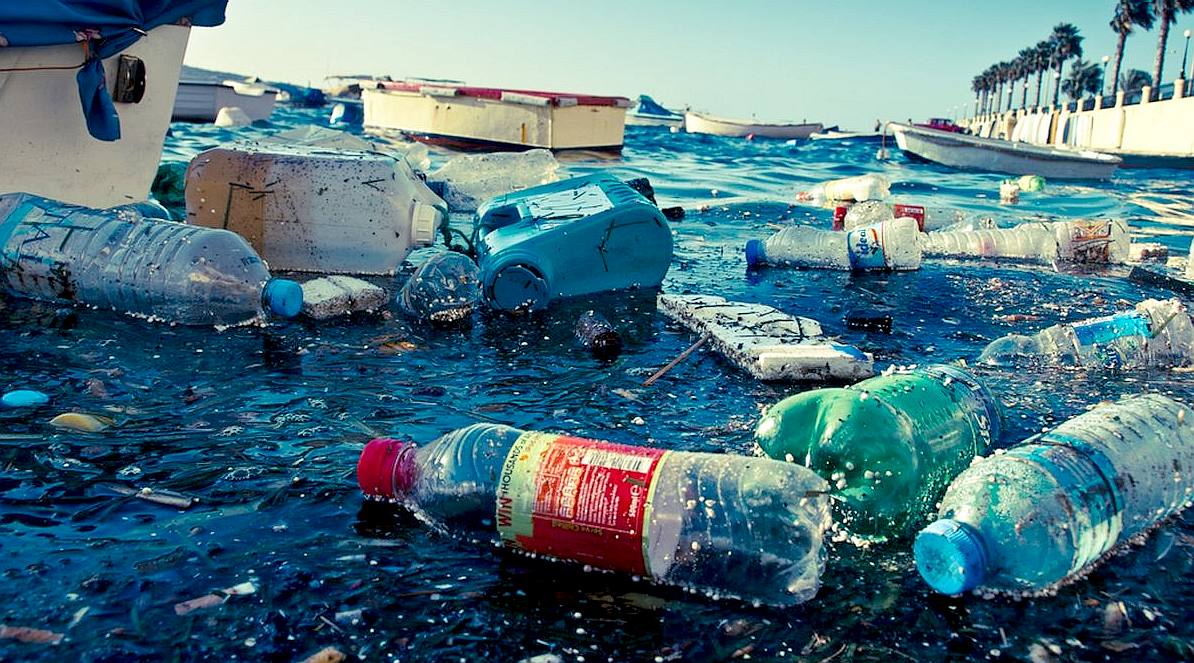|
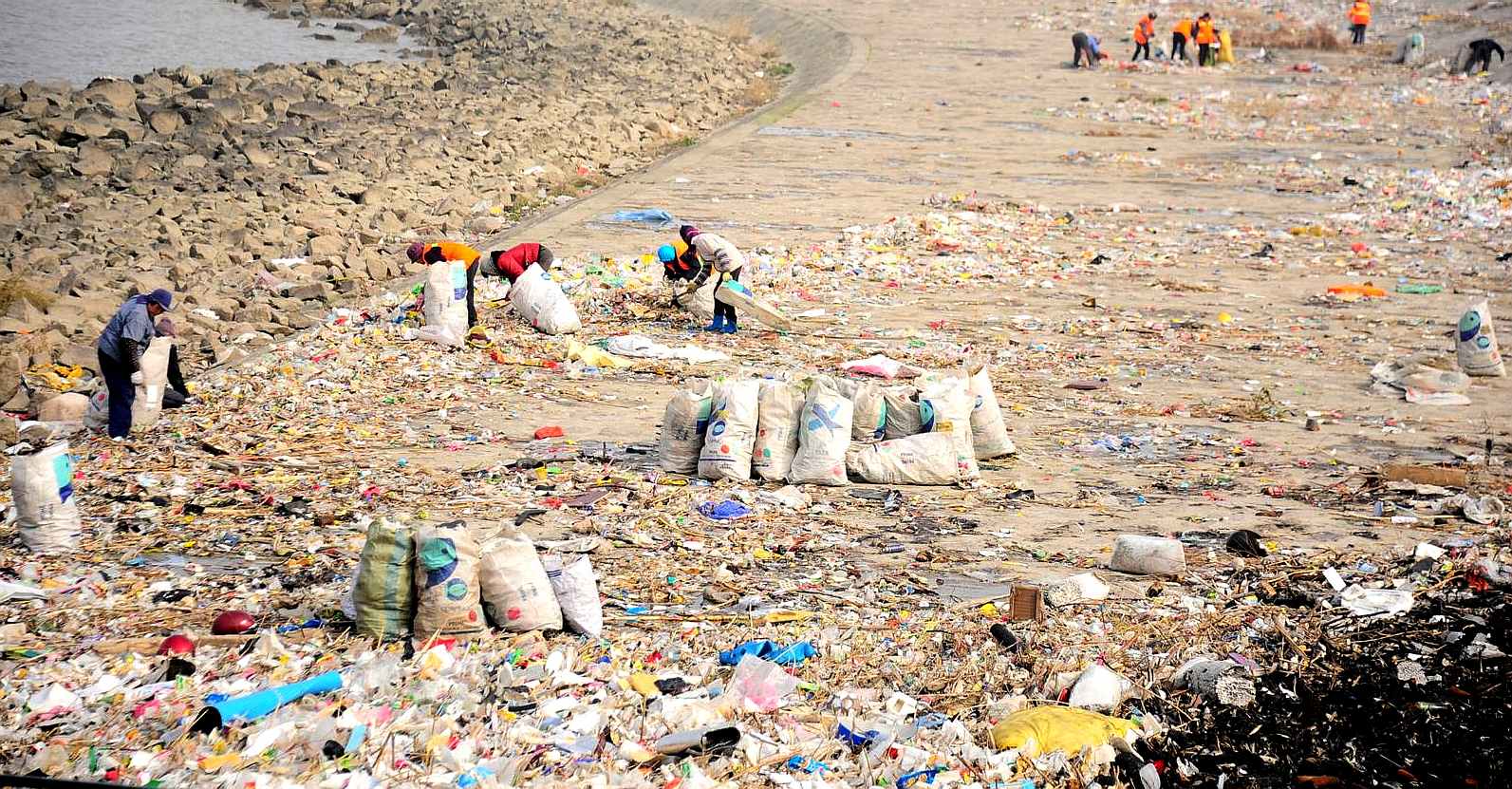
SKY
DECEMBER 2017 - According to the Helmholtz Centre for Environmental Research in
Leipzig, the Yangtze was the worst pollution offender, reference research published in the journal Environmental Science & Technology.
This Chinese river carries up to 1.5 million tonnes of plastic into the sea every year. In contrast, the Thames
in the UK puts 18 tonnes of plastic into the ocean. It seems China has a fish
death wish.
The
Amazon Amazon River, Spanish Río Amazonas, also called Río Marañón and Rio Solimões, the greatest river of South America and the largest drainage system in the world in terms of the volume of its flow and the area of its basin. The total length of the river—as measured from the headwaters of the Ucayali-Apurímac river system in southern Peru—is at least 4,000 miles (6,400 km), which makes it slightly shorter than the Nile River but still the equivalent of the distance from New York City to Rome. Its westernmost source is high in the Andes Mountains, within 100 miles (160 km) of the Pacific Ocean, and its mouth is in the Atlantic Ocean, on the northeastern coast of Brazil. However, both the length of the Amazon and its ultimate source have been subjects of debate since the mid-20th century, and there are those who claim that the Amazon is actually longer than the Nile.
The Amazon River (Portuguese: Rio Amazonas) is the disputed longest river in the world in comparison to the Nile.
The headwaters of the Apurímac River on Nevado Mismi had been considered for nearly a century as the Amazon's most distant source, until a 2014 study found it to be the headwaters of the Mantaro River on the Cordillera Rumi Cruz in Peru. The Mantaro and Apurímac rivers join, and with other tributaries form the Ucayali River, which in turn meets the Marañón River upstream of Iquitos, Peru, forming what countries other than Brazil consider to be the main stem of the Amazon. Brazilians call this section the Solimões River above its confluence with the Rio Negro forming what Brazilians call the Amazon at the Meeting of Waters (Portuguese: Encontro das Águas) at Manaus, the largest city on the river.
The Amazon River has an average discharge of about 209,000 m3/s (7,400,000 cu ft/s)—approximately 6,591 km3 (1,581 cu mi) per year, greater than the next seven largest independent rivers combined. Two of the top ten rivers by discharge are tributaries of the Amazon river. The Amazon represents 20% of the global riverine discharge into
oceans. The Amazon basin is the largest drainage basin in the world, with an area of approximately 7,000,000 km2 (2,700,000 sq mi). The portion of the river's drainage basin in Brazil alone is larger than any other river's basin. The Amazon enters Brazil with only one-fifth of the flow it finally discharges into the Atlantic Ocean, yet already has a greater flow at this point than the discharge of any other river.
WATERSHED
The Amazon basin, the largest in the world, covers about 40% of South America, an area of approximately 7,050,000 km2 (2,720,000 sq mi). It drains from west to east, from Iquitos in Peru, across Brazil to the Atlantic. It gathers its waters from 5 degrees north latitude to 20 degrees south latitude. Its most remote sources are found on the inter-Andean plateau, just a short distance from the
Pacific
Ocean.
The Amazon River and its tributaries are characterised by extensive forested areas that become flooded every rainy season. Every year, the river rises more than 9 m (30 ft), flooding the surrounding forests, known as várzea ("flooded forests"). The Amazon's flooded forests are the most extensive example of this habitat type in the world. In an average dry season, 110,000 km2 (42,000 sq mi) of land are water-covered, while in the wet season, the flooded area of the Amazon basin rises to 350,000 km2 (140,000 sq mi).
The quantity of water released by the Amazon to the Atlantic Ocean is enormous: up to 300,000 m3/s (11,000,000 cu ft/s) in the rainy season, with an average of 209,000 m3/s (7,400,000 cu ft/s) from 1973 to 1990. The Amazon is responsible for about 20% of the Earth's fresh water entering the ocean. The river pushes a vast plume of fresh water into the ocean. The plume is about 400 km (250 mi) long and between 100 and 200 km (62 and 124 mi) wide. The fresh water, being lighter, flows on top of the seawater, diluting the salinity and altering the colour of the ocean surface over an area up to 2,500,000 km2 (970,000 sq mi) in extent. For centuries ships have reported fresh water near the Amazon's mouth yet well out of sight of land in what otherwise seemed to be the open ocean.
The Atlantic has sufficient wave and tidal energy to carry most of the Amazon's sediments out to sea, thus the Amazon does not form a true delta. The great deltas of the world are all in relatively protected bodies of water, while the Amazon empties directly into the turbulent Atlantic.
There is a natural water union between the Amazon and the Orinoco basins, the so-called Casiquiare canal. The Casiquiare is a river distributary of the upper Orinoco, which flows southward into the Rio Negro, which in turn flows into the Amazon. The Casiquiare is the largest river on earth that links two major river systems, a so-called bifurcation.
FLORA AND FAUNA
More than one-third of all known species in the world live in the Amazon rainforest, a giant tropical forest and river basin with an area that stretches more than 5,400,000 km2 (2,100,000 sq mi). It is the richest tropical forest in the world in terms of biodiversity. There are over 3,000 species of fish currently recognised in the Amazon basin, with more being discovered every year. In addition to the thousands of species of
fish, the river supports crabs, algae, and turtles.
MAMMALS
Along with the Orinoco, the Amazon is one of the main habitats of the boto, also known as the Amazon river dolphin (Inia geoffrensis). It is the largest species of river
dolphin, and it can grow to lengths of up to 2.6 m (8.5 ft). The colour of its skin changes with age; young animals are gray, but become pink and then white as they mature. The dolphins use echolocation to navigate and hunt in the river's tricky depths. The boto is the subject of a legend in Brazil about a dolphin that turns into a man and seduces maidens by the riverside.
The tucuxi (Sotalia fluviatilis), also a dolphin species, is found both in the rivers of the Amazon basin and in the coastal waters of South America. The Amazonian manatee (Trichechus inunguis), also known as "seacow", is found in the northern Amazon River basin and its tributaries. It is a mammal and a herbivore. Its population is limited to freshwater habitats, and, unlike other manatees, it does not venture into saltwater. It is classified as vulnerable by the International Union for Conservation of Nature.
The Amazon and its tributaries are the main habitat of the giant otter (Pteronura brasiliensis). Sometimes known as the "river wolf," it is one of South America's top carnivores. Because of habitat destruction and hunting, its population has dramatically decreased. It is now listed on Appendix I of the Convention on International Trade in Endangered Species (CITES), which effectively bans international trade.
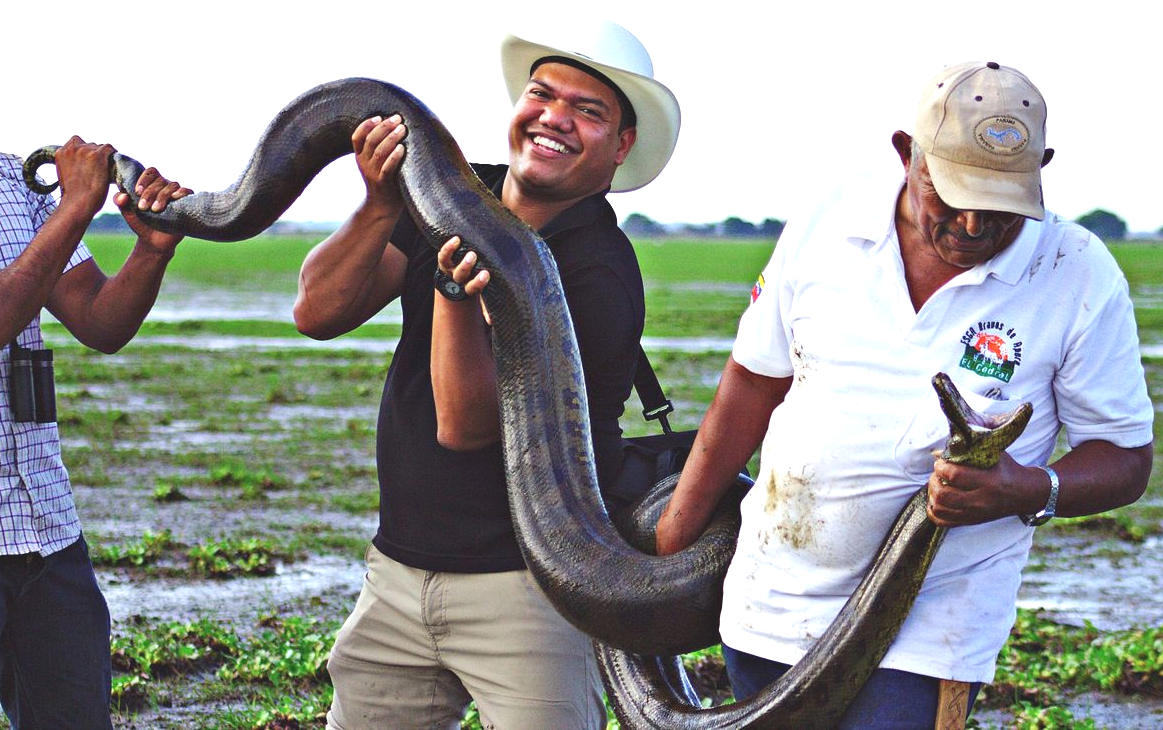
REPTILES
The Anaconda is found in shallow waters in the Amazon basin. One of the world's largest species of snake, the anaconda spends most of its time in the water with just its nostrils above the surface. Species of caimans, that are related to alligators and other crocodilians, also inhabit the Amazon as do varieties of turtles.
FISH
The Amazonian fish fauna is the centre of diversity for neotropical fishes. 5,600 species are currently known, and approximately fifty new species are discovered each year. The arapaima, known in Brazil as the pirarucu, is a South American tropical freshwater fish, one of the largest freshwater fish in the world, with a length of up to 15 feet (4.6
m). Another Amazonian freshwater fish is the arowana (or aruanã in Portuguese), such as the silver arowana (Osteoglossum bicirrhosum), which is a predator and very similar to the arapaima, but only reaches a length of 120 cm (47 in). Also present in large numbers is the notorious piranha, an omnivorous fish that congregates in large schools and may attack livestock. There are approximately 30 to 60 species of piranha. The candirú, native to the Amazon River, is a species of parasitic fresh water catfish in the family
Trichomycteridae, just one of more than 1200 species of catfish in the Amazon basin. Other catfish 'walk' overland on their ventral
fins, while the kumakuma (Brachyplatystoma filamentosum), aka piraiba or "goliath catfish", can reach 3.6 m (12 ft) in length and 200 kg (440 lb) in weight.
The electric eel (Electrophorus electricus) and more than 100 species of electric fishes (Gymnotiformes) inhabit the Amazon basin. River stingrays (Potamotrygonidae) are also known. The bull shark (Carcharhinus leucas) has been reported 4,000 km (2,500 mi) up the Amazon River at Iquitos in Peru.
POLLUTION
Around
ninety percent (90%) of plastics in the ocean comes from just 10 rivers.
Nine of these rivers are located in Asia and one of them borders Thailand.
The top 10 most polluted rivers in the world have one thing in common – they are located alongside large human populations with poor waste management
(PWM) systems.
Rivers
drain the land carrying with the water-flow, man-made rubbish, to join the
ocean currents where plastic waste and other litter is washed out to sea
making it harder to track and collect. These plastic hot-spots would be
prime targets for SeaVax machines operating in
RiverVax mode. Rivers are a logical target if we want to start cleaning up our
oceans cost effectively.
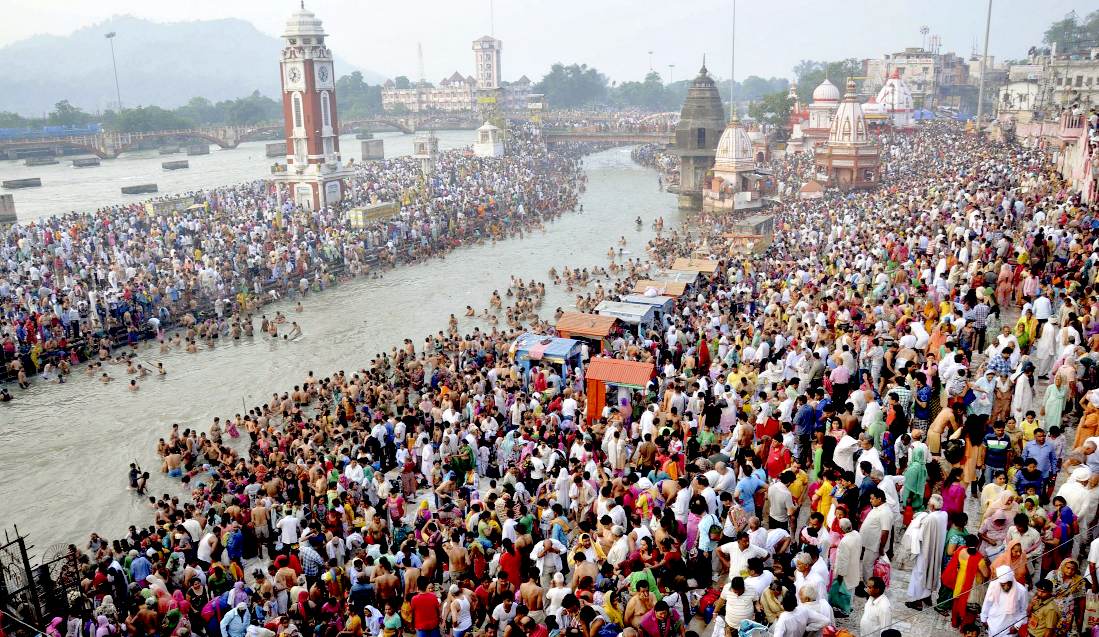
HOLY
GANGA - The
Ganges is considered to be the fifth most polluted river in the world. It contains human waste and industrial contaminants, but provides water
for about 40% of India's population, yet millions of Indians depending on it for their daily
needs. In 2015
this river was considered to be the 2nd worst polluter.
Every
year the world, produces 300 million tonnes of plastics, and 8.8 million tonnes of these are dumped into the oceans. That’s about 40 billion plastic bottles, 100 billion single-use plastic bags, and 522 million personal care items.
If
you know a seriously polluted river, or one that should be a candidate on a
bigger list, please contact Cleaner
Ocean Foundation.
The
rivers noted, added to hundreds of other lesser contributors feed the five
ocean gyres.
1.
North Atlantic Gyre 2.
South Atlantic Gyre 3.
Indian Ocean Gyre 4.
North Pacific Gyre 5.
South Pacific Gyre
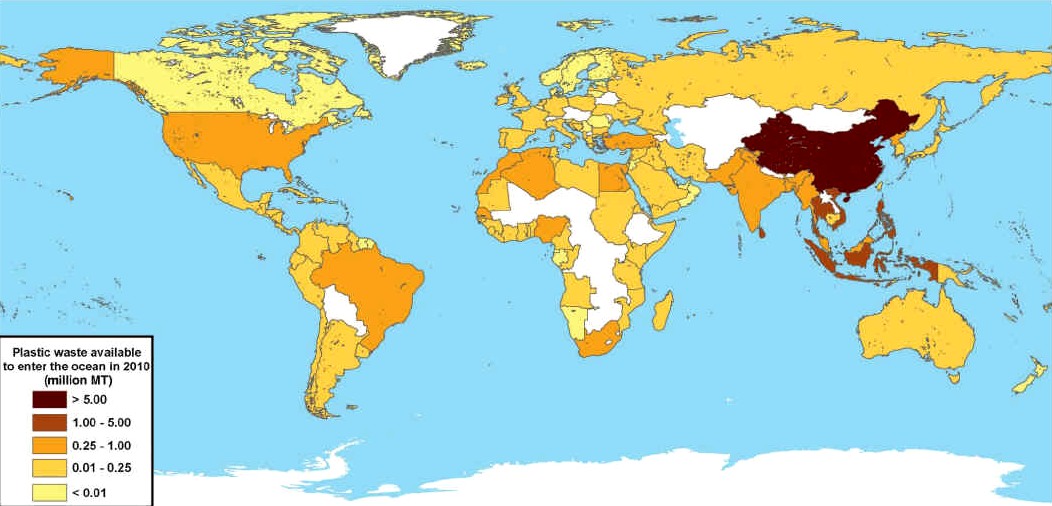
JAMBECK
2010 - Global map with each country shaded according to the estimated mass of mismanaged plastic waste [millions ofmetric tons (MT)] generated in 2010 by populations living within 50 km of the coast. 192 countries were considered. Countries not included in the study are shaded white.
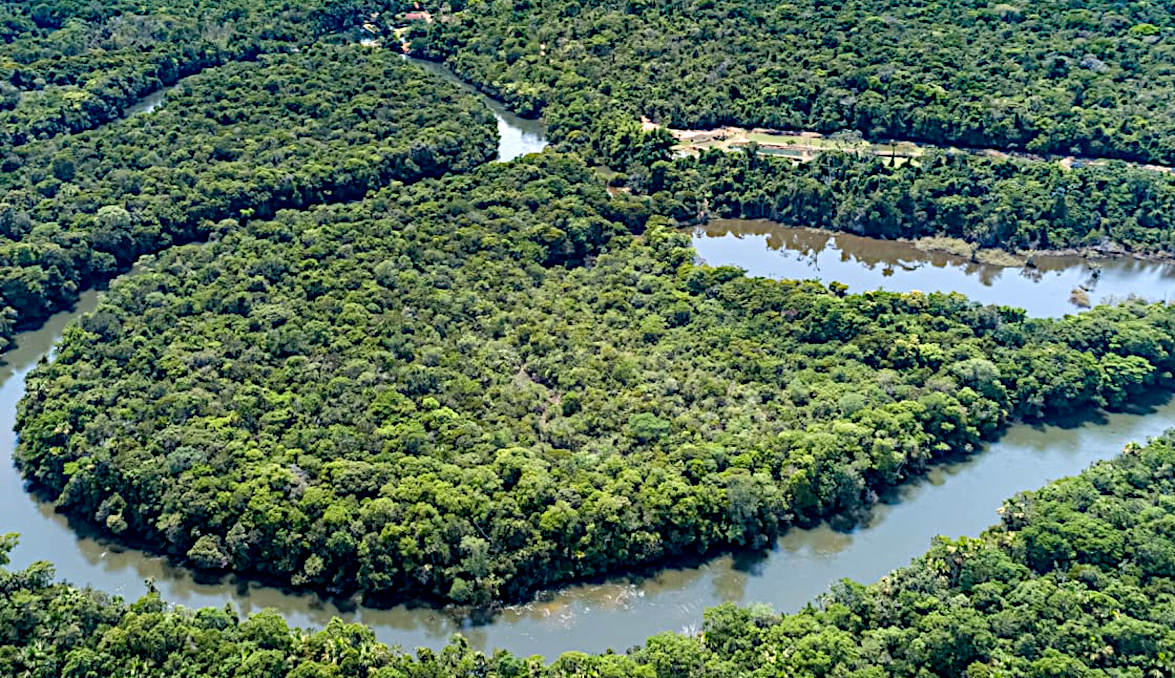
FICTION
- The Amazon
is the location of a group of scientists working for a secure location not
far from Manaus. The secret society are developing super
humans, using advanced nano-computers and cloning technology. Their
backer is a German
occultist, looking to reincarnate Cleopatra.
But nobody has found her mummy. A DNA expert and ocean
adventurer discovers that this group have found
the sarcophagus underwater at Alexandria.
LINKS
& REFERENCE
https://news.sky.com/story/just-10-rivers-carry-90-of-plastic-polluting-the-oceans-11167581
https://thethaiger.com/thai-life/top-10-most-plastic-polluted-rivers-in-the-world-2019
https://earthbuddies.net/citarum-river-indonesia/
|





